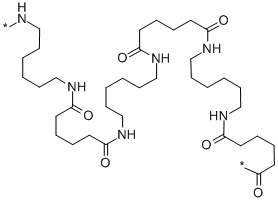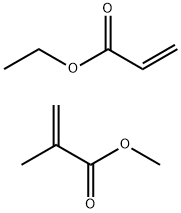Nylon 6/6 , pellets , 32131-17-2
Synonym(s):
Poly(N,N′-hexamethyleneadipinediamide;Poly(hexamethylene adipamide)
CAS NO.:32131-17-2
Empirical Formula: C36H66N6O6X2
Molecular Weight: 678.95
MDL number: MFCD00133999
| Pack Size | Price | Stock | Quantity |
| 250g | RMB531.58 | In Stock |
|
| 1kg | RMB787.60 | In Stock |
|
| others | Enquire |
PRODUCT Properties
| Melting point: | 250-260 °C(lit.) |
| Density | 1.47 g/mL at 25 °C |
| refractive index | n |
| solubility | strong proton donor solvents, acetic acid and phenols: soluble |
| form | pellets |
| Stability: | Stable. Incompatible with strong oxidizing agents, strong bases. |
| Surface tension | 46.5mN/m at 20°C |
| EPA Substance Registry System | Poly[imino(1,6-dioxo-1,6-hexanediyl)imino-1,6-hexanediyl] (32131-17-2) |
Description and Uses
Nylon 6,6 was first developed in 1935 by W.H. Carothers at DuPont and patented in 1938 for use as a textile fiber. It was originally given the name Fiber #66. The fibers are known to be strong, tough, and elastic. Importantly, as opposed to traditional fibers such as cotton, wool, and rayon, nylon fibers are glossy. They are extruded through a spinneret with a circular or trilobal cross section shape. Nylon 6,6 fibers can be used individually, i.e., as monofilaments, for brushes, surgical sutures, tennis strings, and fishing lines. Nylon 6,6 fibers are used for clothing, carpets, tire cords, conveyor belts, and brushes. Nylon 6,6 exhibits excellent dyeability and are twice as durable as Cotton (see Canvasetc.com). Nylon is sometimes coated with plastic, such as vinyl, to produce thin, lightweight waterproof fabrics.
Nylon 6/6 can be used as nanofibers for the fabrication of support materials for osmosis membranes. It can also be used in the formation of the nanofibrous membranes as separators in lithium-ion batteries.
Safety
| Safety Statements | 24/25 |
| WGK Germany | 3 |
| Autoignition Temperature | 752 °F |





